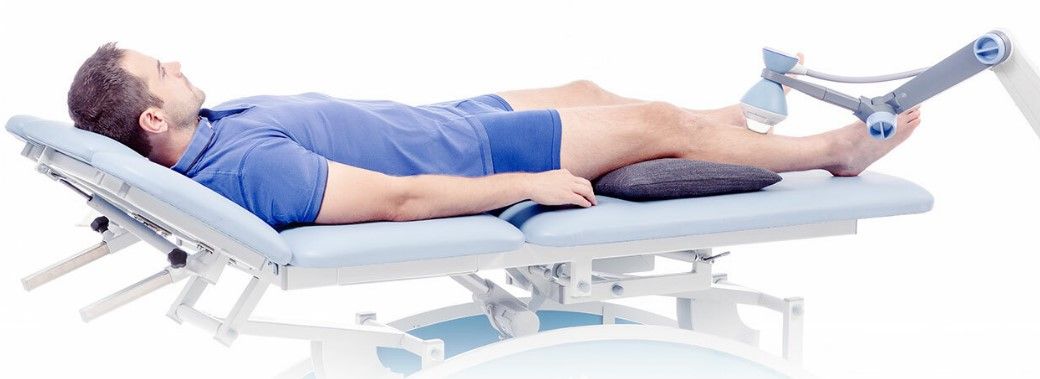Can Shockwave Therapy Help Me Recover From Shin Splints/ Stress Fractures?
Shin splints and stress fractures are common injuries that can significantly impact an athlete's performance and overall quality of life. While rest and physical therapy are often the go-to treatment options for these conditions, focused shock wave therapy (FSWT) has emerged as a promising alternative to help speed up recovery and reduce pain. In this article, we'll take a closer look at the scientific evidence behind FSWT for treating shin splints and stress fractures.
Shin splints, or medial tibial stress syndrome, are common injuries among runners and athletes. It is typically caused by overuse and repetitive stress on the lower leg, resulting in muscle and bone microtrauma.
The symptoms of shin splints include pain, tenderness, and swelling along the inner edge of the shin bone. On the other hand, stress fractures are small cracks in the bone caused by repetitive stress and overuse. They can occur in various bones throughout the body but are most commonly found in the lower leg and feet. The symptoms of stress fractures include pain, swelling, and tenderness in the affected area. But often, highly athletic individuals can buck the trend and only present, on rest, with slight aches and non-existent swelling but instead suffer either late in runs or a throbbing after running.

What is the latest treatment for faster recovery from stress fracture shin splints?
Recently in the last 20 years, we have seen considerable developments in treatment for shin splints called shock wave therapy (SWT). This therapy has two types, F-SWT and R-SWT, which are Radial and Focused.
In a separate section below, we will compare the types of SWT shin splint treatments.
But for now, let us explore the therapy broadly here:
SWT is a non-invasive medical procedure that uses high-energy sound waves to stimulate healing and repair damaged tissue. The shock waves penetrate deep into the tissue, promoting blood flow and the growth of new blood vessels and tissue cells. This increased blood flow and tissue regeneration can help to accelerate healing and reduce pain and inflammation.

What's the scientific evidence for SWT shin splint/ stress fracture treatment?
The scientific evidence for F-SWT as a treatment option for shin splints and stress fractures is promising. A study conducted in 2018 and published in the Journal of Orthopaedic Surgery and Research found that F-SWT was an effective treatment option for patients with medial tibial stress syndrome (the most common type of shin splint). The study, conducted in Singapore, found that F-SWT significantly reduced pain and improved function in patients with this condition.
Another study conducted in 2015 and published in the Journal of Bone and Mineral Research found that F-SWT was an effective treatment option for patients with stress fractures. The study, conducted in Germany, found that F-SWT improved the healing of stress fractures and reduced pain in patients with this condition.
Focused shock wave therapy (F-SWT) is a safe and well-tolerated treatment option for shin splints and stress fractures. A review article published in 2020 in the Journal of Clinical Medicine found that F-SWT had a low risk of adverse effects and was well-tolerated by patients. The report reviewed multiple studies and noted that F-SWT had a high success rate in treating musculoskeletal conditions.
In conclusion, F-SWT is a promising treatment option for patients with shin splints and stress fractures. The scientific evidence for F-SWT as a safe and effective treatment option is favourable. Studies conducted in multiple locations report significant improvements in pain and function in patients with these conditions. F-SWT is a non-invasive and well-tolerated treatment option that can help speed up recovery and reduce pain, making it an attractive option for athletes and patients with active lifestyles.
Which type of shock wave therapy is best for treating shin splints and stress fractures?
Shin splints and stress fractures can be incredibly frustrating injuries that impact an athlete's performance and overall quality of life. While rest and physical therapy are often the go-to treatment options, some individuals may require a more targeted approach to healing. This is where shock wave therapy can come in as a potential solution.
Shock wave therapy is a non-invasive medical procedure that uses high-energy sound waves to stimulate healing and repair damaged tissue. There are two main types of shock wave therapy: radial and focused. While both types have shown promise in treating musculoskeletal conditions, focused shock wave therapy (F-SWT) is considered by some experts to be the more effective and targeted option for treating shin splints and stress fractures.
Radial shock wave therapy (R-SWT) is a more general approach used to treat various conditions, including tendinitis and plantar fasciitis. However, it may be less effective for treating shin splints and stress fractures, which require a more precise and targeted approach. On the other hand, F-SWT can target the exact location of the injury and deliver high-intensity shock waves that stimulate healing and reduce pain.


Multiple studies have reported significant improvements in pain and function in patients with shin splints and stress fractures who received F-SWT treatment. For example, a study published in the Journal of Orthopaedic Surgery and Research in 2018 found that F-SWT significantly reduced pain and improved function in patients with medial tibial stress syndrome. Another study published in the Journal of Bone and Mineral Research in 2015 found that F-SWT improved the healing of stress fractures and reduced pain in patients with this condition.
In addition to being practical, F-SWT is a safe and well-tolerated treatment option. A review article published in the Journal of Clinical Medicine in 2020 noted that F-SWT had a low risk of adverse effects and was well-tolerated by patients.
It's important to note that while F-SWT may be more effective for treating shin splints and stress fractures, the decision on which type of shock wave therapy should be made in consultation with a medical professional. Every individual is unique and may require a different approach to healing. At the London Shock wave & Sports Injury department of Wimbledon Clinic, We have access to both types of SWT and have over ten years of experience in treating this condition.
Conclusion
In conclusion, Radial and Focused Shock Wave Therapy can effectively treat musculoskeletal conditions. However, focused shock wave therapy may be the more effective and targeted option for treating shin splints and stress fractures. It's essential to work with a medical professional to determine the right course of treatment for each individual and to ensure a safe and effective healing process.
At the London Shock wave and Sports Injury clinic Department of Wimbledon Clinic, we treat both stress fracture types of shin splints and the medial tibial stress syndrome types of shin splints. While F-SWT is the primary treatment modality, we also add our physical therapy run-coach program to help stop stress' from returning.
If you want to enquire about either F-SWT treatment for shin splints/ stress fractures of the shin area, click the Contact-Us button below.

Request a call back to learn more
If you're coping with painful Epicondylitis think shock wave therapy could help, we'd love to help. Request a call back now to find out if this effective treatment could be suitable for you.